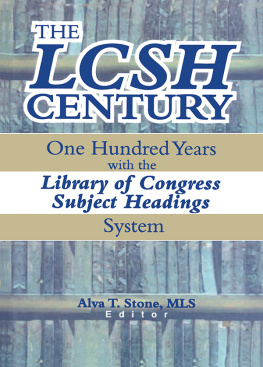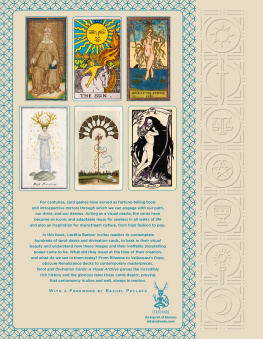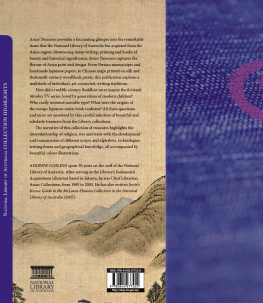

Main Reading Room, Library of Congress, circa 1930s. Photograph by Jack Delano.

Text copyright 2017 by The Library of Congress. Page 222 serves as a continuation of the copyright page. All rights reserved. No part of this book may be reproduced in any form without written permission from the publisher.
Published in association with the Library of Congress
ISBN 9781452158587 (epub, mobi)
Library of Congress Cataloging-in-Publication Data
Names: Library of Congress.
Title: The card catalog : books, cards, and literary treasures / the Library of Congress.
Description: San Francisco : Chronicle Books, [2017] | Includes bibliographical references and index.
Identifiers: LCCN 2016017476 | ISBN 9781452145402 (hc)
Subjects: LCSH: Library of CongressHistory. | Library of CongressCatalogsHistory. | Card catalogsUnited StatesHistory. | Catalog cardsUnited StatesHistory. | Library catalogsHistory. | CatalogingHistory. | ClassificationBooksHistory.
Classification: LCC Z733.U6 C36 2017 | DDC 025.3/13dc23 LC record available at https://lccn.loc.gov/2016017476
Design by Brooke Johnson
Typeset in Poynter Old Style, Benton Sans, and Prestige Elite
Front of case: Photograph by Shawn Miller
Chronicle Books LLC
680 Second Street
San Francisco, California 94107
www.chroniclebooks.com

People working at desks in the Main Reading Room of the Library of Congress, circa 1940.
Foreword
One of my first assignments when I began my library career was to file Library of Congress card catalog sets into a wooden case in a storefront branch of the Chicago Public Library. The importance of accuracy and the responsibility of the card catalog was impressed upon me.
For the better part of the twentieth century, the card catalog stood as the gateway to the wonders of a librarys collection. Now it is celebrated in this new book from the Library of Congress. The Card Catalog reflects an important, if unheralded, aspect of our national librarythe profound impact of the catalog in organizing the Librarys vast holdings and the role of cooperative cataloging in helping isolated rural libraries serve their communities and larger libraries refine their collections.
As Librarian of Congress, I appreciate the daunting challenges my predecessors faced in leading the worlds largest library, from former Librarian Herbert Putnams bold leadership in developing a system for distributing standardized cards to libraries nationwide to Henriette Avrams extraordinary new technology that ushered in the modern age of the online catalog. How fortunate the Library of Congress was and is to have such a tireless and dedicated staff to carry out the different functions that make it one of the pillars of our democracy. I am honored to have the opportunity to build on the legacy and accomplishments of my predecessors as we continue to extend the sense of ownership and pride in our national treasures to all Americans.
Just as the card catalog afforded Putnam the opportunity to provide easy access to the Librarys boundless resources, the tradition continues as digitization makes ever more items accessible to the public. Since the Librarys establishment in 1800, with a collection of 740 volumes and only three maps, it has grown into a diverse collection of more than 162 million items, including more than 38 million cataloged books and other print materials in 470 languages. The public is welcome to visit the Library of Congress in Washington, D.C., or online at www.loc.gov as we strive to ensure that all citizens can fully and freely access information, pursue knowledge, and make use of our shared cultural heritage.
CARLA HAYDEN
Librarian of Congress

Main Reading Room, Library of Congress, circa 1950.
Introduction
Wandering the stacks at the Library of Congress can be as overwhelming as it is inspiring. Drifting through the maze of bookshelves evokes images of Argentine writer Jorge Luis Borgess fictional Library of Babela seemingly infinite labyrinth of books. Being surrounded by the collected memory of the human race is a reminder of the intrinsic desire for both knowledge and organization. Ever since the emergence of the written word, humans have scribbled down myths, stories, histories, and natural observations and worked tirelessly to gather and protect these fragments of a shared past.
Evolving alongside, in the shadows of the written word, was one of the most versatile and durable technologies in history: the library cataloga road map for navigating this wilderness of books. The humble yet powerful card catalog progressed slowly and, like countless other important inventions, owes its existence to a number of brilliant thinkers, as well as to the twists and turns of history. From the peculiar and idiosyncratic methods of ancient libraries to far more intricate, comprehensive modern attempts, library catalogs are a tangible example of humanitys effort to establish and preserve the possibility of order.
Assembled in handsome oak cabinets, the card catalog once framed the palatial Main Reading Room at the Library of Congress. It has now fallen to the exigencies of modern life, replaced by the flickering screens of the online computer catalog. One would need to venture farther into the stacks to find the Main Card Catalog. Opening a drawer and flipping through the well-worn cards, many handwritten and filled with marginalia containing valuable information not to be found in an Internet search, leaves one with a sense of awe at how catalogers distilled so much information onto simple 3-by-5-inch index cardscards that still sit neatly filed, waiting to reveal the treasures hidden in the hundreds of miles of Library stacks on Capitol Hill.
PETER DEVEREAUX
Writer-Editor, The Library of Congress

Die Bibliothek der Universitt Leyden La bibliothque de luniversit de Leyde. Jan Cornelis Woudanus, circa 1570-1615.
Chapter 1
Origins of the Card Catalog
Cuneiforms to Playing Cards

Bill of sale, Sumerian cuneiform tablet, 2200-1900 B.C.
The logical idea of using a tablet for cataloging purposes parallels other clerical applications, such as accounting and documentation.
CATALOGS OF CLAY
The origin of the card catalog goes back to the cradle of civilization nestled in the fertile ground between the Tigris and Euphrates rivers. About 3000 B.C ., the Sumerians, who flourished in Mesopotamia (present-day Iraq), used ordinary reeds as styli to make impressions on wet clay. In doing so, they devised what is considered the first writing system. This system, called cuneiform, was initially used by bureaucrats to keep records of daily economic activity and was consigned to a modest group of scribes. As cuneiform gradually grew more refined over the millennia, scribes used it to engrave Sumerian oral literary works onto clay tablets. Excavations beginning in the late nineteenth century uncovered thousands of these tabletsfilled with epic poems, hymns, fables, and myths.



















